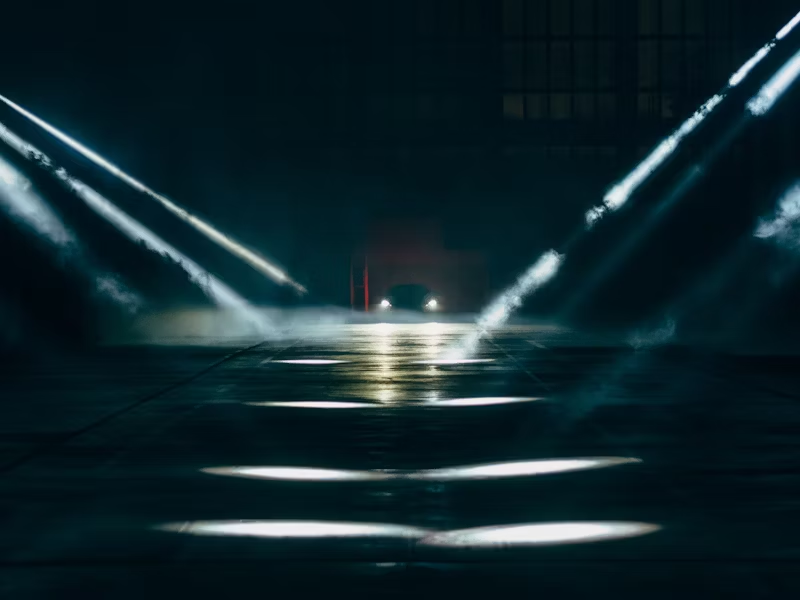The Majority of Drivers Think LED Headlights Are Too Bright
In recent years, LED headlights have taken the automotive world by storm, offering enhanced illumination and energy efficiency. But what was once hailed as a technological breakthrough has now become a source of frustration for many drivers. A significant number believe these lights are simply too bright, posing safety risks and creating discomfort on the roads. Let’s dive into this growing concern and explore potential solutions.

The Growing Frustration Among Drivers
LED headlights might light up the road ahead, but for many, they’ve cast a shadow on driving comfort. A survey by the RAC in the UK revealed that 89% of drivers consider these lights overly bright, and 85% feel the glare has worsened over the years.
This sentiment isn’t limited to the UK. In the U.S., similar complaints abound. Victor Morgan, a mechanical engineer, conducted independent tests and found that real-world glare levels from LED headlights often exceed regulatory limits.
The Promise of LEDs: A Double-Edged Sword
When LED headlights first emerged, they were celebrated for their benefits:
- Improved Visibility: Their bright, focused beams help drivers see farther and clearer at night.
- Energy Efficiency: LEDs consume less power compared to halogen bulbs.
- Longevity: These lights can outlast traditional bulbs by a significant margin.
However, these advantages come with unintended consequences. Their concentrated, piercing beams can be blinding for oncoming traffic, especially at night.
Misaligned Headlights: A Major Culprit
Mark Rea from the Light and Health Research Center highlights that misaligned headlights significantly worsen the problem. When vehicles, particularly SUVs or trucks, have improperly adjusted LED lights, the glare is intensified for lower-sitting cars.
“It’s not every car,” Rea notes, “but about 20% are glaring.” This misalignment makes it hard for drivers to focus, increasing the risk of accidents.
The Real-World Impact of LED Brightness
Reduced Reaction Times
Many drivers report slowing down on dark roads because of blinding LED lights. According to surveys, two-thirds of drivers admit to reducing speed to cope with the glare.
Night Driving Glasses on the Rise
The discomfort caused by LEDs has led some to invest in specialized night-driving glasses, which claim to reduce glare. While these might help, they’re more of a band-aid solution than a fix for the root problem.

The Need for Regulatory Action
Advocacy groups and experts are urging regulatory bodies to revisit the rules governing headlight brightness. The National Highway Traffic Safety Administration (NHTSA) in the U.S. has received petitions to reevaluate maximum brightness levels for LED headlights.
Mark Baker, president of the Soft Lights Foundation, captures the sentiment: “Everyone is mystified by why they are being blinded.” Current regulations, critics argue, don’t adequately address real-world driving conditions.
The Global Concern Over LED Glare
While the LED headlight debate is heated in the U.S., it’s a worldwide issue. In the UK, 64% of drivers believe LED headlights are so bright that they increase the risk of accidents.
The consistency of complaints across countries highlights the need for international standards. A coordinated effort could ensure safer, glare-free driving experiences globally.

Potential Solutions for Safer Roads
Adaptive Lighting Technologies
One promising solution is adaptive lighting technology. These systems automatically adjust the intensity and direction of headlights based on driving conditions. For example, the lights can dim when an oncoming car is detected, reducing glare.
While this technology exists, it’s not yet widespread. High costs and limited adoption mean it may be years before adaptive lighting becomes standard.
Regular Headlight Alignment
In the meantime, vehicle owners should ensure their headlights are properly aligned. Regular maintenance checks can prevent misalignment, reducing glare for other drivers.
Stricter Manufacturing Standards
Manufacturers could play a role by designing headlights that balance brightness with comfort. Stricter standards for beam angles and intensity could mitigate the glare issue without sacrificing visibility.

The Role of Drivers in Minimizing Glare
While manufacturers and regulators work on long-term solutions, drivers can take immediate steps:
- Check Your Headlights: Ensure they are properly aligned, especially if you drive a taller vehicle like an SUV or truck.
- Use Low Beams When Appropriate: High beams are not necessary in well-lit areas and can worsen glare for others.
- Be Mindful of Aftermarket LED Bulbs: Installing overly bright or improperly designed bulbs can exacerbate the problem.
Conclusion: Balancing Brightness with Safety

LED headlights were introduced to make driving safer, but their excessive brightness has led to unintended challenges. As more drivers voice their concerns, it’s clear that a balanced approach is needed.
Regulatory changes, innovative technologies, and driver awareness can collectively address this issue, ensuring LED headlights illuminate roads without compromising safety or comfort. Until then, it’s up to all of us—manufacturers, regulators, and drivers alike—to work toward glare-free roads that everyone can enjoy.






